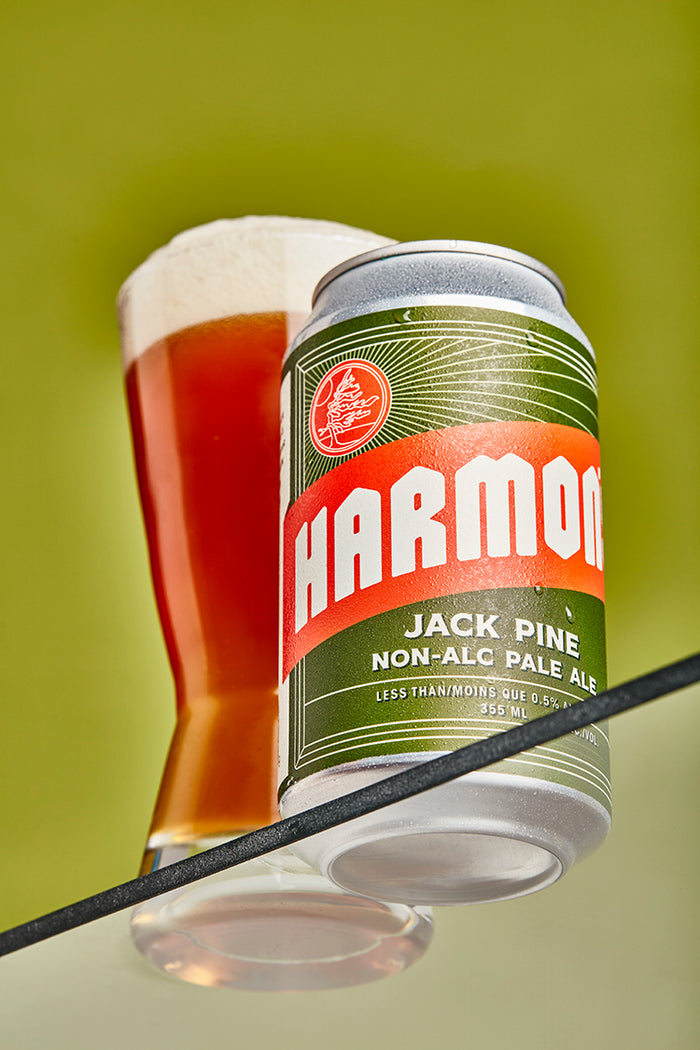

· By Steve Abrams
The Essentials of Making Awesome Non-Alc Craft Beer
From the very beginning, we at Harmon’s wanted to make the best tasting non-alcoholic craft beer possible. If it wasn’t going to taste like a regular brew, what was the point? To achieve this we knew we needed to start with two key principles:
- Quality ingredients
- Traditional methods
Any brewer, whether they’ve been doing it for 20 days or 20 years knows that quality ingredients are critically important. At Harmon’s that’s where we started. We spent months searching for the best malts, hops and yeast for the styles we wanted to brew. We met with some awesome people who are doing some extraordinary things in this space- including environmentally friendly practices. It was a match made in heaven. They loved what we were attempting, and we loved their passion and enthusiasm. We are probably a bit biased, but we are certain these amazing ingredients are a key reason Harmon’s non-alcoholic beer tastes so much better than our competitors.
The second key is our process. We brew our Harmon’s craft beers the same way any other craft brewery would! We rely on traditional brewing techniques: mashing, lautering, boiling, whirlpooling & fermentation to bring our craft beers to life. We could take the easy way out and use space age de-alcoholizing techniques, but it impacts taste and that was non-negotiable. So, no distillation or nano-filtration, no arrested fermentations, no secret additives…we just don’t generate the alcohol during our fermentations in the first place! Seems simple, but at Harmon’s we see traditional brewing techniques as the only way to make irresistible non-alcoholic beer. It really is a win-win. Not only do these methods mean that we retain the full flavor that a proper fermentation and organic ingredients provide, but we lower the environmental impact of production in terms of water & energy usage.
There are other benefits too. Because we generate 0.5% alcohol or less in our brews, they are not just environmentally sustainable, but at 60 calories or less per can, they’re also sustainable for on your waistline.
Don’t just take our word for it! Click here and order some of our non-alcoholic beer. We offer three core styles for every palate - with more styles on the way, and deliver to most parts of Canada.
Rob Doyle is Brewmaster & Co-founder of Harmon's Craft Brewing
2 comments
-
This is such an insightful and well-written piece on the intricate process of crafting great non-alcoholic beer. I appreciate how you dive into the details of techniques like arrested fermentation and vacuum distillation to remove alcohol without sacrificing flavor. The tips on optimizing mouthfeel and body are extremely helpful too. As the demand for high-quality NA craft beer continues to grow, guides like this are invaluable for educating brewers and enthusiasts alike. Kudos to the Harmon’s team for leading the way in this emerging niche! I can’t wait to put some of these methods into practice on my next NA brew day.
sbrewingcompany on
-
Hi there,
I stopped drinking alcohol 25 years ago and since then my favorite “substitute” was the non-alcoholic beer, so I can tell that during these years I tasted a lot of brands and I’m quite a connoisseur. I’ve got very interested in the prospect of tasting a craft non-alcoholic, this should be the “next level”. Maybe you are aware of the Partake beer, it is sold now in LCBO. Before the Partake I was buying from this guy a lot of beers from Europe or USA. Many of them were brand names. And after all this time he launched the Partake, many flavors, you can see them online. The problem was that I didn’t like any of them. Not one. So of course I was quite reluctant regarding your products, but what a big surprise! They taste soooo good. I had one of each and they are wow. They have good taste, but they also have “density”, they are not some watery stuff. Now you are my favorite beer. Thank you and see you in more restaurants and stores.
Sorin on





